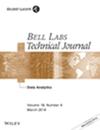下载PDF
{"title":"The Migration of the Optical Internetworking Forum Common Electrical Interface Standardization to Optical Intra-System Interconnects Beyond 25 Gb/s","authors":"Thomas Eckart, Hans-Joachim Götz, Thomas Ziselsberger, Klaus-Holger Otto","doi":"10.1002/bltj.21638","DOIUrl":null,"url":null,"abstract":"<p>There has been a decade long history of groundbreaking work on Common Electrical Interface (CEI) Implementation Agreements within the Optical Internetworking Forum (OIF). While the first edition of CEI specifications was dedicated to 6 Gb/s and 11 Gb/s serial electrical interfaces, later revisions address a range of applications encompassing 20 Gb/s to 28 Gb/s rates involving various classes of reach, with recent initiatives targeted at doubling these rates. This paper discusses the evolution of OIF CEI specification development, including the impacts of critical elements such as channel models, signaling schemes, and the power consumption of the required Serdes designs. It provides an overview of current active work areas that are focusing upon 28 Gb/s and 56 Gb/s serial electrical interfaces and their relevance to some of the latest 100G to 400G line card and system developments. Finally, it offers a projection of ongoing OIF work regarding the Next Generation Interconnect (NGI) framework project, which is starting to define a transition path from electrical to optical intra-system interconnects for even higher serial data rates and longer reaches. © 2013 Alcatel-Lucent.</p>","PeriodicalId":55592,"journal":{"name":"Bell Labs Technical Journal","volume":"18 3","pages":"267-283"},"PeriodicalIF":0.0000,"publicationDate":"2013-11-27","publicationTypes":"Journal Article","fieldsOfStudy":null,"isOpenAccess":false,"openAccessPdf":"https://sci-hub-pdf.com/10.1002/bltj.21638","citationCount":"1","resultStr":null,"platform":"Semanticscholar","paperid":null,"PeriodicalName":"Bell Labs Technical Journal","FirstCategoryId":"1085","ListUrlMain":"https://onlinelibrary.wiley.com/doi/10.1002/bltj.21638","RegionNum":0,"RegionCategory":null,"ArticlePicture":[],"TitleCN":null,"AbstractTextCN":null,"PMCID":null,"EPubDate":"","PubModel":"","JCR":"Q1","JCRName":"Engineering","Score":null,"Total":0}
引用次数: 1
引用
批量引用
Abstract
There has been a decade long history of groundbreaking work on Common Electrical Interface (CEI) Implementation Agreements within the Optical Internetworking Forum (OIF). While the first edition of CEI specifications was dedicated to 6 Gb/s and 11 Gb/s serial electrical interfaces, later revisions address a range of applications encompassing 20 Gb/s to 28 Gb/s rates involving various classes of reach, with recent initiatives targeted at doubling these rates. This paper discusses the evolution of OIF CEI specification development, including the impacts of critical elements such as channel models, signaling schemes, and the power consumption of the required Serdes designs. It provides an overview of current active work areas that are focusing upon 28 Gb/s and 56 Gb/s serial electrical interfaces and their relevance to some of the latest 100G to 400G line card and system developments. Finally, it offers a projection of ongoing OIF work regarding the Next Generation Interconnect (NGI) framework project, which is starting to define a transition path from electrical to optical intra-system interconnects for even higher serial data rates and longer reaches. © 2013 Alcatel-Lucent.
光互联论坛通用电接口标准化向25gb /s以上光系统内互连的迁移
在光互连网络论坛(OIF)中,关于公共电接口(CEI)实施协议的开创性工作已经有十年之久。虽然CEI规范的第一版专门用于6 Gb/s和11 Gb/s串行电接口,但后来的修订版解决了包括20 Gb/s至28 Gb/s速率在内的一系列应用,涉及各种类型的覆盖范围,最近的计划旨在将这些速率提高一倍。本文讨论了OIF CEI规范发展的演变,包括通道模型、信令方案和所需Serdes设计的功耗等关键因素的影响。它概述了当前活跃的工作领域,重点是28 Gb/s和56 Gb/s串行电接口,以及它们与一些最新的100G到400G线路卡和系统开发的相关性。最后,它提供了关于下一代互连(NGI)框架项目的正在进行的OIF工作的预测,该项目开始定义从电气到光学系统内互连的过渡路径,以实现更高的串行数据速率和更长的传输距离。©2013阿尔卡特朗讯
本文章由计算机程序翻译,如有差异,请以英文原文为准。


